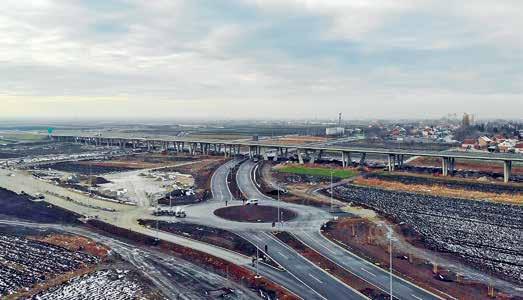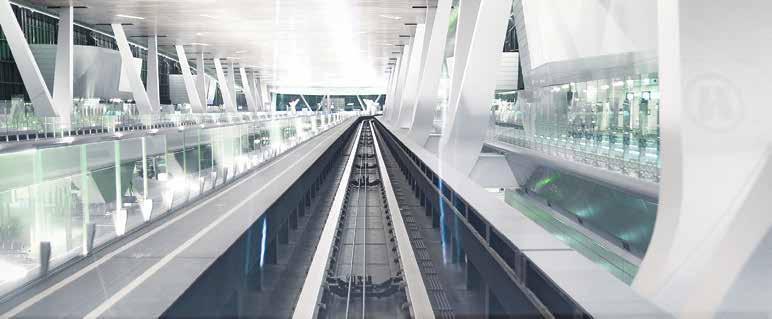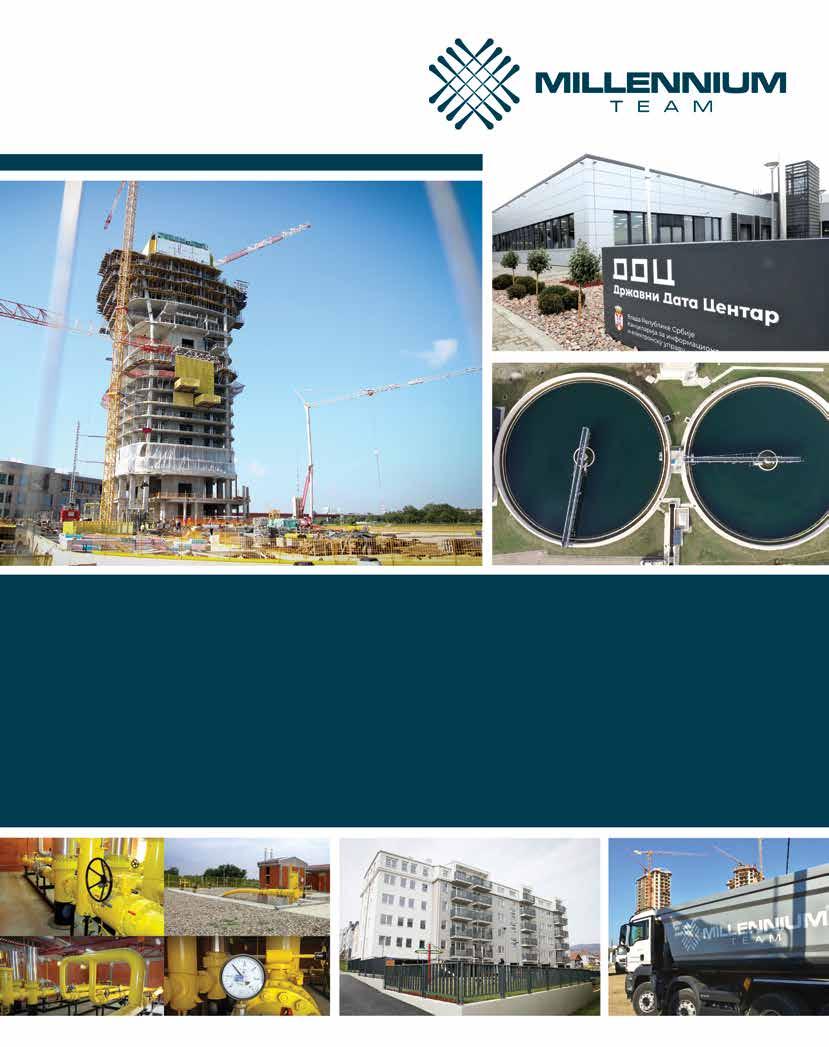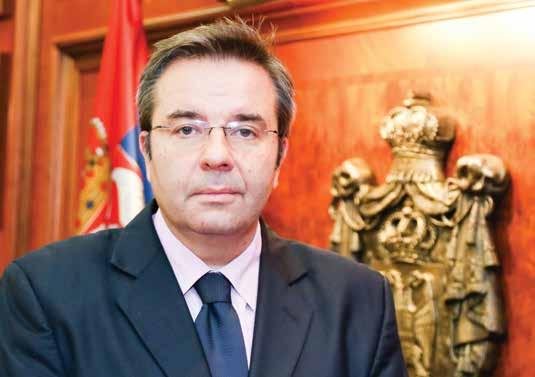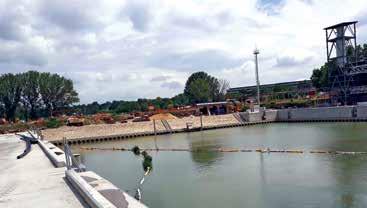
6 minute read
CORRIDORS ARE KEY TO REVIVING PASSENGER AND CARGO TRAFFIC
ANITA DIMOSKI, ACTING ASSISTANT MINISTER FOR RAILWAYS & INTERMODAL TRANSPORT
Due to the nature of investment in the railway sector, it is necessary to have patience in order to see the effects of the implemented reform process. However, there's no doubt that railway corridors are key to the reviving of passenger and cargo traffic, and economic development generally.
Serbia is one of the countries that has a key position on the map of trans-European transport corridors. And that’s precisely why the Government of the Republic of Serbia has defined its main priorities as being the development of the main transport routes, encompassing road, water and rail.
The backbone of the railway network in Serbia is certainly Corridor X – one of the Pan-European Railway Corridors that was defined in Helsinki in 1997. In regard to this corridor, the first strategic goal of the Republic of Serbia is to establish high-quality and interoperable railway infrastructure with high-performance on the railway lines that comprise Corridor X. The total value of funds secured for the implementation of projects on these lines exceeds 2.5 billion euros. Works are currently being carried out within the scope of the Belgrade-Budapest project, on the section from Belgrade to Novi Sad, which is planned for completion by year’s end 2021. During 2022, a two-track railway line able to handle speeds of up to 200kph will be established for traffic. The continuation of works, from Novi Sad to the border with Hungary, is expected to start at the beginning of autumn.
The reconstruction of the section from Niš to Brestovac will begin during the second half of this year, while the reconstruction of the railway line from Niš to Dimitrovgrad, together with the construction of a bypass railway around the city of Niš, will begin in the first half of 2022. It is necessary to stress that the Republic of Serbia received part of grants for these projects through European Union funds.
In parallel with these activities, the Ministry of Construction, Transport and Infrastructure has secured grants from the European Union for the preparation of documentation for the railway line from Stara Pazova to the border with Croatia and from Brestovac to the border with North Macedonia. These works are expected to be completed by year’s end 2022. When it comes to the remaining part of the railway from Belgrade to Niš, the Republic of Serbia is determined to establish a two-track railway for speeds of up to 200kph along the entire length of the route. The actual specifying of activities for this very important project are expected to come during the course of this year.
The realisation of all these projects will lead to a reduction in transit travel times through our country. However, it is essential to keep in mind the effects and impacts that current works, and those that we’re yet to implement, have on railway passenger and freight traffic. Specifically, works on the section of the railway from Novi Sad to the border with Hungary are being carried out under a regime of the complete closure of traffic. This has impacted on the transit flows of freight, causing their redirecting to alternative routes through the territory of the Republic of Serbia, which are longer, have tracks that are in a poorer condition and have a lower capacity compared to the rail tracks along the corridor. With an awareness of that, we secured the required funds from the national budget and implemented
the renovation of certain alternative routes with the aim of preserving transit flows of freight through Serbia, given the “threat” that’s constantly lurking in the modern railway market – in the form of competing corridors.
Here we are primarily referring to Corridor IV, which runs parallel to our corridor and stretches across the territories of Bulgaria and Romania. However, the fact is that from Budapest, which is one of the largest transport hubs, routes through Romania and Bulgaria – even after the construction of the bridge over the Danube near Vidin – remain longer to Turkey by a distance of 240km and to Greece by a distance of 340km, compared to our corridor. This additionally affirms Corridor X, along which cities are connected in the most rational way through Southeast Europe - Budapest, Ljubljana, Belgrade, Zagreb, Skopje, Athens, Sofia and Istanbul - but also indirectly with Central Europe, for example via Podgorica and Tirana.
The Republic of Serbia is the only non-EU member country (besides Switzerland and Norway) that is still part of the network of the so-called European Rail Freight Corridors. In accordance with the transport policy agenda that’s being implemented by the European Union, nine initial railway corridors were established in 2010, with two more having been formed in the meantime – including the so-called Alpine-Western Balkan Rail Freight Corridor. This corridor passes through the territory of our country, from Dimitrovgrad via Belgrade to Šid. Works on it formally began in February 2020, and the Republic of Serbia has permanent representatives on its executive and management boards.
When it comes to passenger transport, the high intensity of infrastructure works, or disruptions to traffic and temporary suspensions of traffic on certain lines that these works have caused, have inevitably led to a significant reduction in the number of passengers using the railway in recent years. The temporary suspension of traffic on the Belgrade Centre-Novi Sad section, due to works on the construction of the railway. has contributed significantly to this negative trend.
In addition to this, we also shouldn’t lose sight of the impact of the COVID-19 epidemic, which practically halved the number of passengers transported in 2020, but also the revenues generated by passenger carriers, both in the EU and in our country.
However, we hope that these difficulties will be behind us soon, and in the period ahead we expect the reopening of this route for traffic, and at its full capacity – for speeds of up to 200kph - which will be the first line of this type in our region. In this sense, the Ministry of Construction, Transport and Infrastructure is also conducting activities related to the procurement of the most modern electric trains for speeds of up to 200kph, which are expected to be delivered by the end of this year.
As for Corridor X as a whole, we can expect the same or a similar effect following completion of the section from Novi Sad to Subotica, but also following the implementation of planned projects on the routes from Belgrade to Šid towards Croatia, from Niš to Dimitrovgrad towards Bulgaria, from Niš to Preševo towards North Macedonia and, perhaps most importantly, on the route that represents a kind of backbone of the Serbian transport system, and that is the route from Belgrade to Niš.
We shouldn’t overlook the fact that the effects of the reconstruction of certain lines for passenger traffic are already visible and extremely significant, and as an example of this we can single out the Belgrade-Valjevo route, where the reconstruction of the railway has rendered the railway service fully competitive with coach traffic on the roads, thus restoring the confidence of users in the railway.
Due to the nature of investments in the railway sector, or the long period of time that’s necessary in order to see the effects of the previously implemented process of reforming the railway sector and the huge investment cycle that has been launched, trust is actually the key word with which I want to conclude this article. And that means trust in the efforts that we are all exerting together to ensure that Serbia finally gets a modern railway system that’s aligned with the needs of the economy, but also tailored to all Serbian citizens, which will enable life in the country to be simpler in terms of transport. I’m convinced that we will all persevere together on that journey.
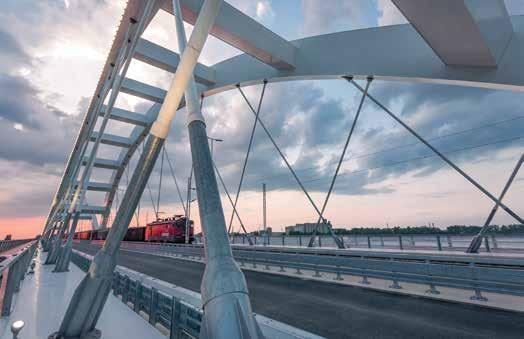
With the completion of works on the Belgrade and Novi Sad lines and the procurement of the most modern electric trains, for speeds of up to 200kph, Serbia’s two largest cities will be closer than ever before

